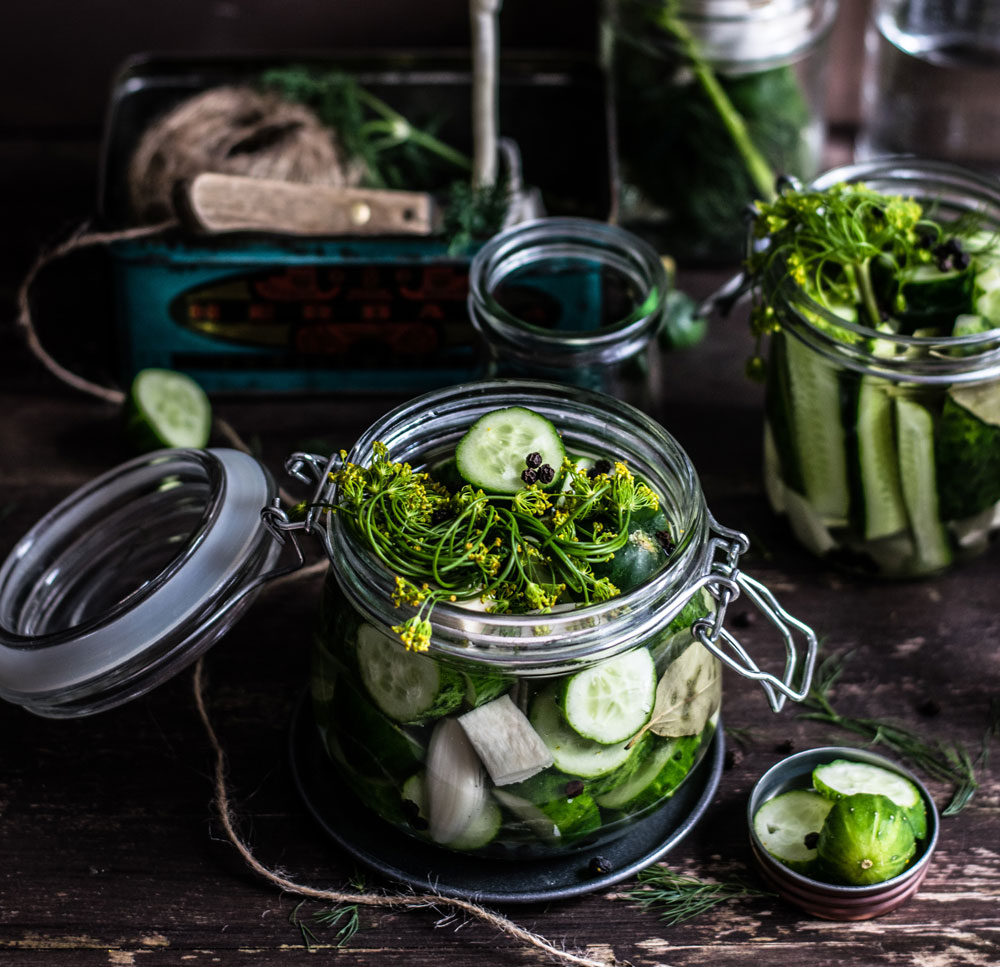It’s No Big Dill – How to Make Pickles at Home
People are Passionate About Pickles
I used to hate pickles when I a was a kid. Actually, it is one of my most enduring food-dislikes. I only recently let pickles stay on my salami sandwiches. Vegetable pickles were my gateway into their salty, tangy, crunchy, sometimes sweet world. (Likely, they were also dangling into my Bloody Mary which I’m sure helped change my mind). It turns out, what I don’t like are the mass produced, cloying jarred pickles of the early 90s (I realize some of you, who used to torture me with your pickle juice fingers, love exactly that taste I’m dissing. Forgive me, I’m a mostly food snob.)

Now, I love all pickled vegetables and well made cucumber pickles.
Pickles were really hip in the farm to table, everything artisan food revolutions a few years ago. I once hired a chef who thought he was the world’s gift for pickling strawberries (he didn’t invent that). Pickles are just regular cool again but they have come through with an upgrade. You can buy great jarred pickles from regular grocery stores, online and expect them any decent sandwich shop (I think anyway. I live in San Francisco, I should fess up that my “regular” food is pretty high quality).
Why spend upwards of $7 per jar though?
You can definitely make your own pickles! Especially vegetable pickles since we’re talking food waste here. This is a well established anti-food waste method. Pickles are almost as old as recorded history. Back in the day people would have pickled to preserve the fresh cucumbers which, as we all know, go bad really quickly. Its fascinating that with all of our technology and advancements for an easy life, food still wins. I hope food always wins. I don’t want to see some modified slime-proof cucumber or eternally enduring cauliflower. I don’t want to take freshness out of fresh food – lets instead make pickles!

HOW TO MAKE PICKLES
STEP 1:
What are we pickling? Check your fridge! Consider whether you want combination pickles (ie. the classic Italian Giardinara with cauliflower, carrots, peppers, garlic, herbs and olive oil) or single vegetable pickles which are easy to mix and match later.
Advanced Pickling Move – try fruit! Peaches, pears, berries, all make interesting condiments
STEP 2:
Get your jars ready. These can be the ever popular mason jars or a simple tupperware container with an airtight lid. We’re making refrigerator pickles so they’ll never be shelf stable so tupperware works just fine. Bonus waste-free points for using a clean, recycled pasta sauce jar or an old store-bought pickle jar!
STEP 3: PICKLE
Ingredients:
- 2 quart size jars (as pictured above)
- 2 cups vinegar (I like cider, rice or distilled white vinegar. Experiment)
- 3 cups water
- 1/4 cup salt
- 1-2 tablespoons sugar (sweeten to taste and depending on veggies)
- Up to 1/4 cup dried spices (peppercorns, mustard seeds, fennel seeds, chili flakes, etc)
- Assorted veggies, sliced and diced to fill the jars tightly but don’t press to compact the food inside
- Fresh herbs or garlic cloves
Process:
- Bring vinegar, water, salt, sugar and spices to a simmer and cook until salt and sugar are dissolved. Add your spices.
- Place veggies and fresh herbs into the jars and pour the brine slowly over the top. Let it rest to fill up all of the spaces.
- Cover and refrigerate. Some pickles will be good in as few as 60 minutes, others will be better in about 24 hours. Most pickles will last in the fridge for a few months! Softer fruits and veggies are best eaten within a couple of weeks.
Just as I was thinking about pickling and its history, I got to eat at Mamaleh’s in Cambridge. Their “modern era jewish delicatessen” menu was extensive and everything was so delicious! I can’t stop thinking of these awesome pickles (below). They were $8 for a quart – its probably worth it if you live nearby, but if not, I think you can pickled whatever is looking old in your produce drawer right now!

